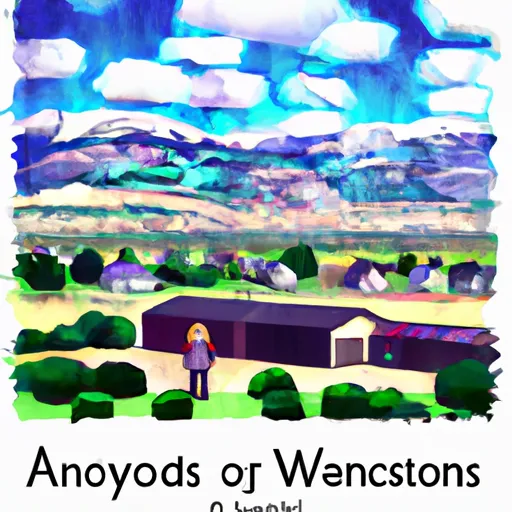-
 Snoflo Premium
Snoflo Premium
Get unlimited access to all our content
With no Ad interruptions! - Start Your Free Trial Login with existing account
Kamas
Eden Index
Climate
7.3
•
Recreation
7.8
•
Community
•
Safeguard
5.7/10

Kamas is a small town located in Summit County, Utah, and is surrounded by stunning natural beauty. Situated at an elevation of 6,500 feet, Kamas experiences a semi-arid climate with four distinct seasons. Winters are cold and snowy, with average temperatures ranging from 20°F to 40°F. Summers are warm and dry, with temperatures ranging from 60°F to 90°F. Spring and fall bring mild temperatures and occasional precipitation.
Kamas lies in the Upper Provo River Watershed and is fed by several tributaries, including the Weber and Provo Rivers. These water sources provide ample opportunities for outdoor water recreation such as fishing, kayaking, and rafting. The rivers are home to various fish species, including trout, making them popular among anglers.
Outdoor enthusiasts will find a plethora of recreational opportunities in and around Kamas. The nearby Uinta Mountains offer endless hiking and backpacking trails, with stunning alpine lakes and scenic views. The Mirror Lake Highway, a scenic byway that connects Kamas to the mountains, provides access to numerous campgrounds, picnic areas, and wildlife viewing spots.
Overall, Kamas, Utah is a paradise for outdoor lovers, with its diverse climate, water resources, and abundance of outdoor recreation opportunities.
What is the Eden Index?
The Snoflo Eden Index serves as a comprehensive rating system for regions, evaluating their desirability through a holistic assessment of climate health, outdoor recreation opportunities, and natural disaster risk, acknowledging the profound impact of these factors on livability and well-being.
Climate Health Indicator (CHI): 7.3
Kamas receives approximately
749mm of rain per year,
with humidity levels near 63%
and air temperatures averaging around
5°C.
Kamas has a plant hardyness factor of
5, meaning
plants and agriculture in this region thrive during a short period during spring and early summer. Most
plants will die off during the colder winter months.
By considering the ideal temperature range, reliable water supplies, clean air, and stable seasonal rain or snowpacks, the Climate Health Indicator (CHI) underscores the significance of a healthy climate as the foundation for quality living.
A healthy climate is paramount for ensuring a high quality of life and livability in a region, fostering both physical well-being and environmental harmony. This can be characterized by ideal temperatures, reliable access to water supplies, clean air, and consistent seasonal rain or snowpacks.
Weather Forecast
Streamflow Conditions
Weber
Area Rivers
Weber
Snowpack Depths
Weber
Reservoir Storage Capacity
Weber
Groundwater Levels
Recreational Opportunity Index (ROI): 7.8
The Recreational Opportunity Index (ROI) recognizes the value of outdoor recreational options, such as parks, hiking trails, camping sites, and fishing spots, while acknowledging that climate plays a pivotal role in ensuring the comfort and consistency of these experiences.
Access to outdoor recreational opportunities, encompassing activities such as parks, hiking, camping, and fishing, is crucial for overall well-being, and the climate plays a pivotal role in enabling and enhancing these experiences, ensuring that individuals can engage in nature-based activities comfortably and consistently.
Camping Areas
| Campground | Campsites | Reservations | Toilets | Showers | Elevation |
|---|---|---|---|---|---|
| Sawmill Hollow | 5 | 6,191 ft | |||
| Aspen Grove | 53 | 7,763 ft | |||
| Lower Provo River | 10 | 7,382 ft | |||
| Unicorn | 26 | 7,242 ft | |||
| Balsam | 25 | 5,924 ft | |||
| Currant Creek | 98 | 7,995 ft | |||
| Strawberry Bay - Strawberry Reservoir | 300 | 7,647 ft | |||
| Renegade | 62 | 7,597 ft | |||
| Taylors Fork ATV | 11 | 7,424 ft | |||
| Mill Hollow | 26 | 8,903 ft |
Nearby Ski Areas
Catastrophe Safeguard Index (CSI):
The Catastrophe Safeguard Index (CSI) recognizes that natural disaster risk, encompassing floods, fires, hurricanes, and tornadoes, can drastically affect safety and the overall appeal of an area.
The level of natural disaster risk in a region significantly affects safety and the overall livability, with climate change amplifying these risks by potentially increasing the frequency and intensity of events like floods, fires, hurricanes, and tornadoes, thereby posing substantial challenges to community resilience and well-being.
Community Resilience Indicator (CRI):
The Community Resilience Indicator (CRI) recognizes that education, healthcare, and socioeconomics are crucial to the well-being of a region. The CRI acknowledges the profound impact of these elements on residents' overall quality of life. By evaluating educational resources, healthcare accessibility, and economic inclusivity, the index captures the essential aspects that contribute to a thriving community, fostering resident satisfaction, equity, and social cohesion.

